Electrical Machines: Unit V: Autotransformer and Three Phase Transformer
Voltage and Current Relationships for Different Types of Connections
Three Phase Transformer
• In the three phase transformers, the phase voltage ratio is same as the turns ratio. But due to the different types of connections the ratio of line voltages is different. The relationships between voltages and currents for various types of connections is given in the Table 7.5.1.
Voltage
and Current Relationships for Different Types of Connections
AU: Dec.-05, 11, 14, May -11, 19
•
In the three phase transformers, the phase voltage ratio is same as the turns
ratio. But due to the different types of connections the ratio of line voltages
is different. The relationships between voltages and currents for various types
of connections is given in the Table 7.5.1.
.•
While deriving these relationships, the following assumptions have been made :
1.
The primary line voltage is VL volts
2.
The primary line current is IL amperes.
3.
Phase Transformation Ratio is K,
K=
V2 / V1= N2 / N1 where V2
and V1 are phase voltages.
4.
Loads are balanced.
5.
Loads are purely reisitive i.e. having unity power factor.
6.
There are no losses and the transformers are ideal in behaviour.
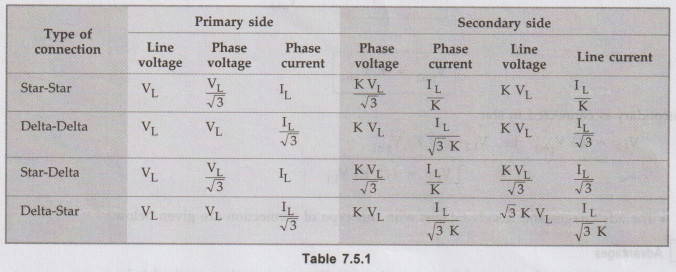
1. Choice of Transformer Connections
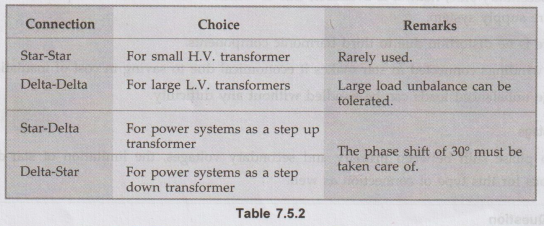
Ex. 7.5.1 A 3-phase, 500 kVA, 6000 V/400 V,
50 Hz, delta-star connected transformer is delivering 300 kW at 0.8 pf lagging
to a balanced 3-phase load connected to the LV side with HV side supplied from
6000 V, 3-phase supply. Calculate the line and winding currents in both the
side. Assume the transformer to be ideal. AU : Dec.-05, May-19, Marks 15
Sol. :
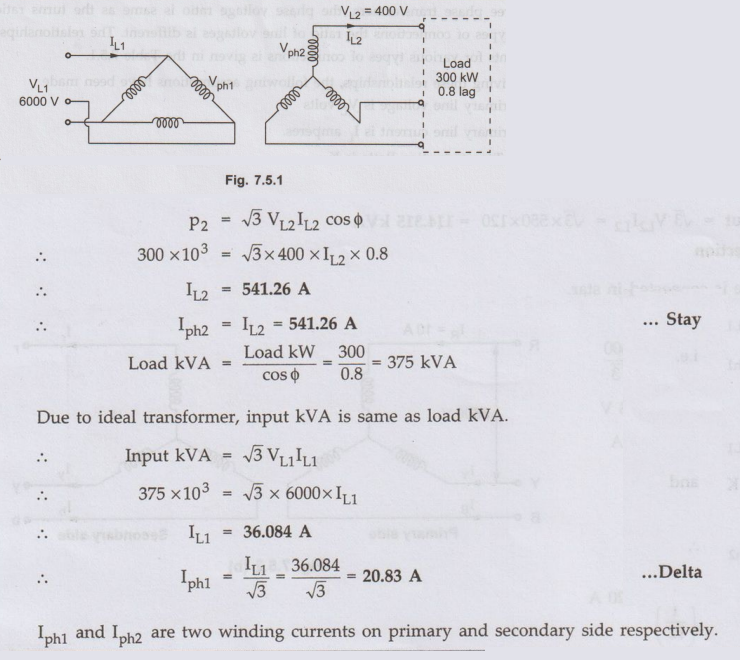
Ex. 7.5.2 A 3 phase step down transsformer
is connected to 6600 volts mains and it takes 10 A. Calculate the secondary
line voltage, line current, and output for the following connections a) Delta -
Delta b) Star – Star c) Star - Delta d) Delta - Star
Turns ratio/phase is 12. Draw
connection diagrams.
Sol. :
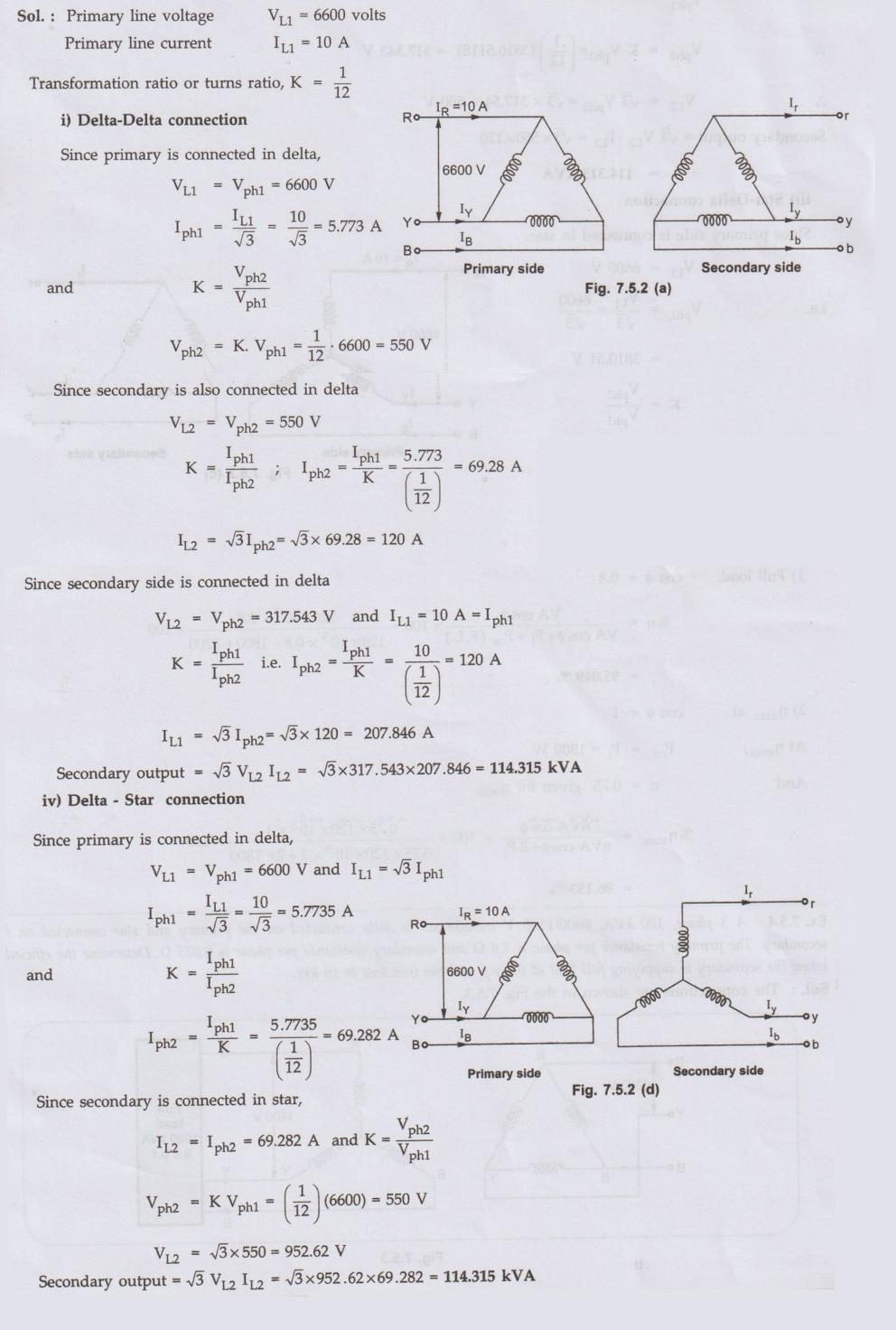
Ex. 7.5.3 A 120 kVA, 6000/400 V, star/star, 3
phase, 50 Hz transformer has a iron loss of 1800 W. The maximum efficiency
occur at 3/4 full load. Find the efficiency of the transformer at
1) Full load and 0.8 p.f. and
2) The maximum efficiency at unity
p.f. AU
: Dec.-05 Marks 8
Sol. :
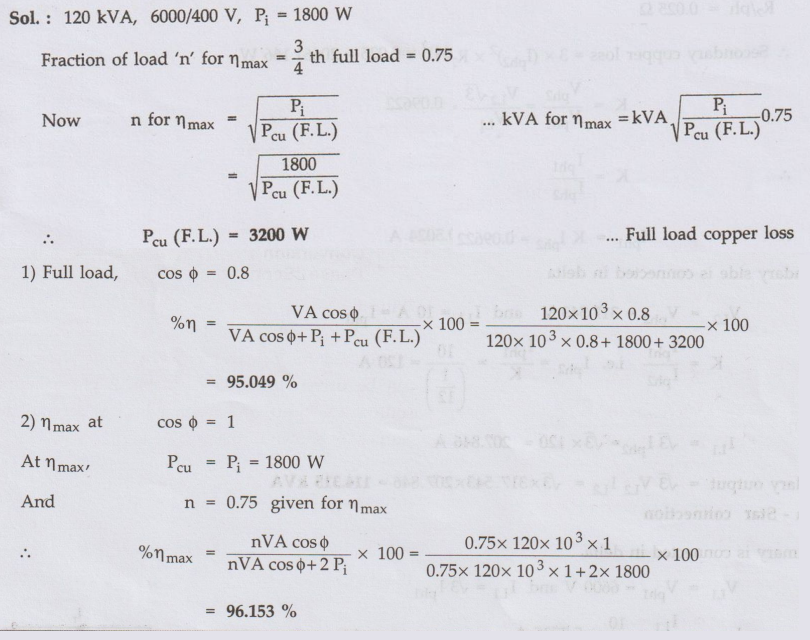
Ex. 7.5.4 A 3 phase, 100 kVA, 6600/1100 V
transformer is delta connected on the primary ans star connected on the
secondary. The primary resistance per phase is 1.8 Ω and secondary resistance
per phase is 0.025 Ω. Determine the efficiency when the secondary is supplying
full load at 0.08 p.f. and the iron loss is 15 k W.
Sol. :
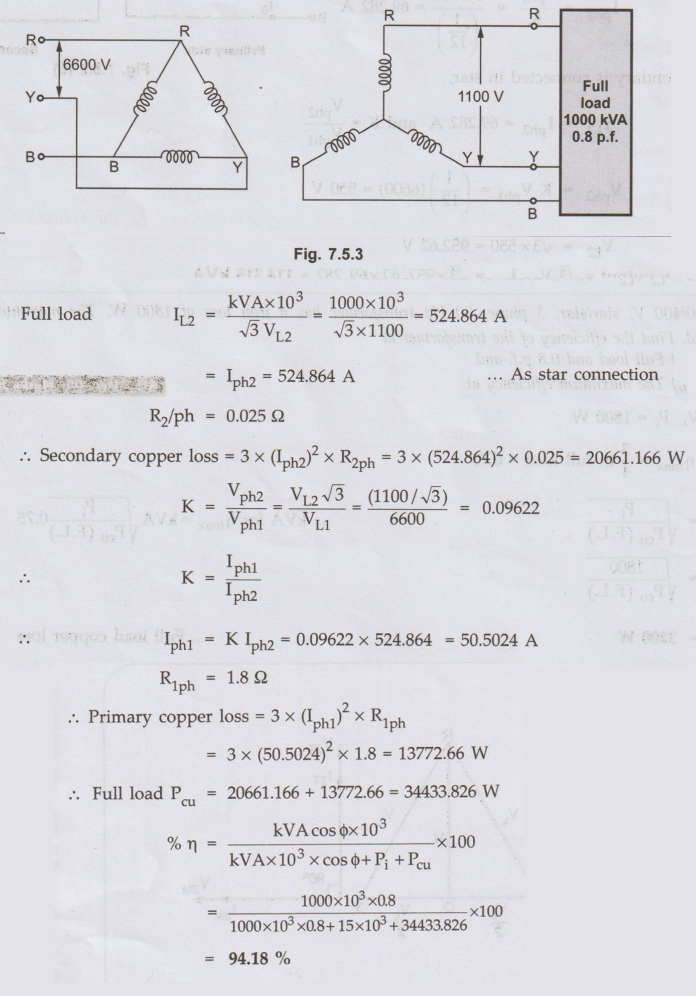
Review Questions
1. State the voltage
and current relations for various three phase transformer connections.
2. A transformer has
a ∆ connected primary and a star connected secondary, working on 50 Hz supply.
The line voltages on primary and secondary sides are 6.6 kV and 400 V
respectively. The line current on the primary side is 8 A and the secondary
side has a balanced load of 0.6 p.f. lagging. Find a) Output of the transformer
b) The line current on the secondary side. (Ans.: a) 54.857 kW b) 132 A)
3. A three phase
transformer has delta connected primary and a star connected secondary working
on 50 Hz three phase supply. The line voltages of primary and secondary are
3300 V and 400 V respectively. The line current on the primary side is 12 A and
secondary has a balanced load at 0.8 lagging p.f. Determine the secondary phase
voltage line current and the output. [Ans. 230.94 V, 99.11 A, 54.94 kW]
Electrical Machines: Unit V: Autotransformer and Three Phase Transformer : Tag: : Three Phase Transformer - Voltage and Current Relationships for Different Types of Connections
Related Topics
Related Subjects
Electrical Machines I
EE3303 EM 1 3rd Semester EEE Dept | 2021 Regulation | 3rd Semester EEE Dept 2021 Regulation
